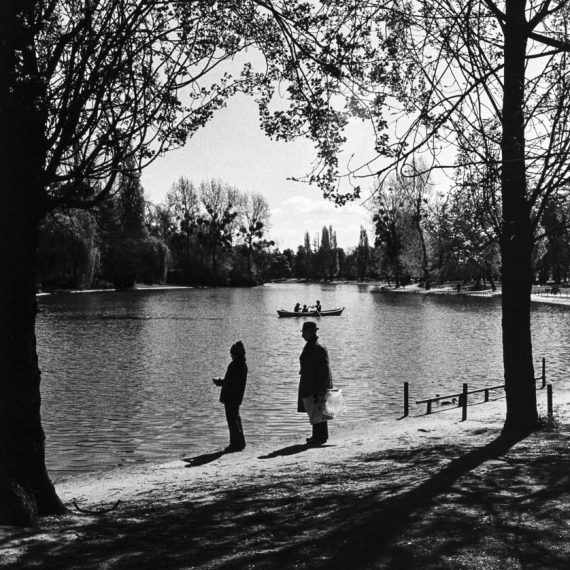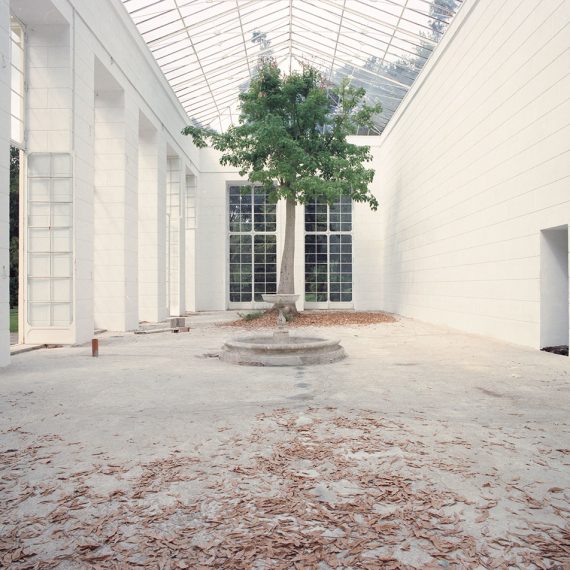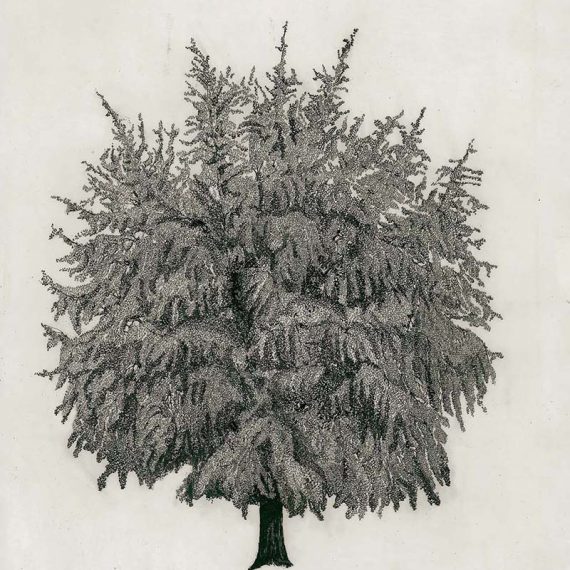Un piede nell’Eden.
Luigi Ghirri and other perspectives.
Giardini in Europa and L’Architettura degli Alberi
curated by Ilaria Campioli
works by Luigi Ghirri // Andrea Abati, Olivo Barbieri, Giovanni Chiaramonte, Joan Fontcuberta, Mimmo Jodice, Gianni Leone, Francesco Radino, Olivier Richon, George Tatge, Ernesto Tuliozi, Fulvio Ventura, Verena Von Gagern e Cuchi White // Cesare Leonardi and Franca Stagi
This exhibition offers a wide range of reflection on natural elements, creating a dialogue among three experiences which take place around the same time and where photography, drawing and graphic design act as special devices to reposition nature inside our horizon of perception where it often plays a secondary, background role.
In the main corridor, dedicated to the work of Luigi Ghirri, images are on display mainly taken in parks and gardens between 1984 and 1988, places where, according to the artist, you can relive and experience a feeling of belonging to nature. Places he turns to after having described, in previous years, the deep transformation of the first natural and agricultural areas, actually marking a radical shift in how they are perceived.
While in the second part, a selection of photographs is back on display from Giardini in Europa, a group exhibition created in 1988 under the curatorship of Luigi Ghirri and Giulio Bizzarri, presenting the results of the research conducted by thirteen international artists (Andrea Abati, Olivo Barbieri, Giovanni Chiaramonte, Joan Fontcuberta, Mimmo Jodice, Gianni Leone, Francesco Radino, Olivier Richon, George Tatge, Ernesto Tuliozi, Fulvio Ventura, Verena Von Gagern e Cuchi White) in green areas around Italy and abroad.
L’Architettura degli Alberi by Cesare Leonardi and Franca Stagi, a monumental work published in 1982 to study and understand the structure of trees, describes, in the third part of the exhibition, the huge effort made by the two architects to recognise the characteristics of every type of wood and to fit them in correctly into garden projects and natural areas.
All this research, which is presented as independent and complete, is proof of the renewed interest, starting from the late 1970s, in green areas, where the garden reappears with its ideological and ecological but also mnemonic, historical and cultural importance, as an expression of a new form of sensitivity towards nature and the past that can now be defined as “Green heritage”.




